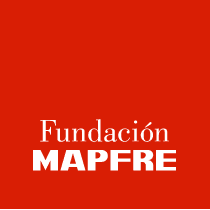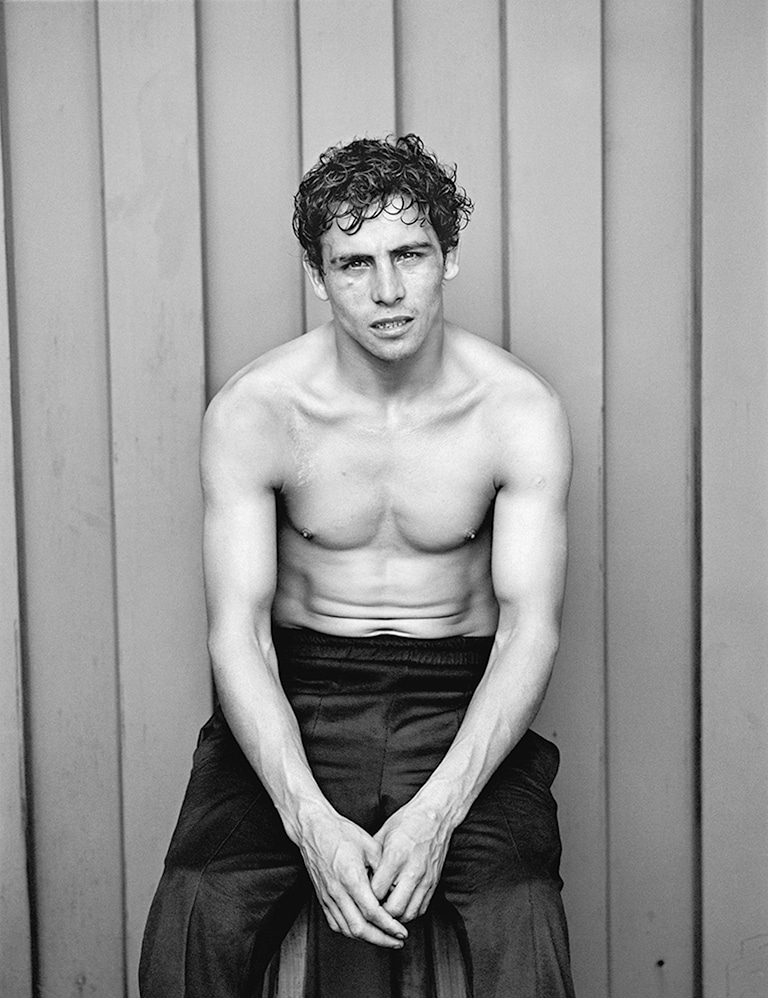
Boxer VI, Santiago, from the series Boxers. The fight against the angel, 1987
© Paz Errázuriz. Colecciones Fundación MAPFRE
Paz Errázuriz
From 6 June to 15 September 2024
Discover the exhibition
The work of Paz Errázuriz (Santiago de Chile, 1944), a self-taught artist, starts in the second half of the 1970s, in Chile during Augusto Pinochet’s dictatorial regime (1973-1990), and continues up to the present in a career that has always been developed in her country of origin.
The use of themes and characters on the margins of the mainstream and conventional discourses, as well as spaces in which marginalization and reclusion dominate (vulnerable children, the mentally ill, prostitutes, transvestites…), is a constant in Paz Errázuriz’s work. Her images, which seem to want to give voice to those who are not usually listened to, always express her firm social conscience, the relevance she gives to holding an ethical stance in front of the world and her deep respect and proximity to the people portrayed and the matters that concern to her.
As part of the KBr’s annual programme with our Photography Collection, this exhibition presents a careful selection of this group of images, offering an overview of her work from the 1970s to the present day and including some of her best-known series, such as La Manzana de Adán (Adam’s Apple) and El infarto del alma (The Heart Attack of the Soul).
The Chilean dictatorship
The Chilean military regime was imposed with a coup d’état on September 11, 1973, which overthrew the democratic government of President Salvador Allende. From that date until March 11 1978, Augusto Pinochet presided over the Military Junta. In that year and to legitimise his dictatorship, Pinochet called disputed elections then in 1980 approved a new constitution, proclaiming himself permanent president of the Republic of Chile. The Junta remained in power until 1990. The dictatorship established a curfew which remained in force until 1987 and was characterised by an anti-communist and authoritarian model in which personal liberty, political parties, unions and democracy were repressed, leading to the persecution and economic and social inequality of a large part of the population. According to data provided by the Chilean National Institute of Human Rights (INDH), victims of the Pinochet dictatorship exceeded 40,000, taking into account those who were murdered, tortured and disappeared.
Materials
The Artist
The sense of belonging to what she photographs is a leitmotiv in Paz Errázuriz’s work. As she herself has pointed out: “I have always thought that photography has to do with the person who records it. In my case, all my series inevitably respond to my desires, interests, and obsessions”. Since the outset of her career in the late 1970s the artist has considered that her work involves an ongoing commitment to the subjects and realities she addresses, for which reason the conclusion of a project is a complicated process. Many of Errázuriz’s subjects belong to a community or have a particular way of life, spaces to which she also wishes to belong, at least at the time of taking the photographs.
Where?
KBr Fundación MAPFRE
Avenida Litoral, 30 – 08005 Barcelona
Times
Tuesday to Sunday (and holidays): from 11:00 a.m. to 8:00 p.m.
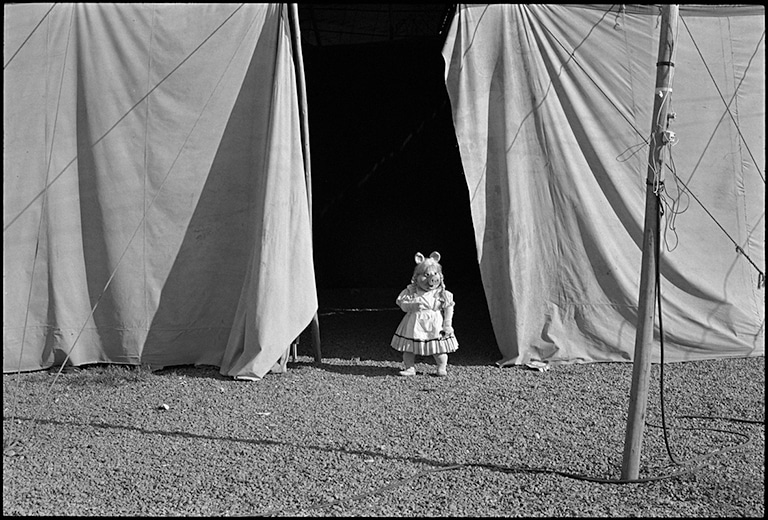
Paz Errázuriz
Miss Piggy I, Santiago, from the series The circus, 1984
© Paz Errázuriz. Colecciones Fundación MAPFRE
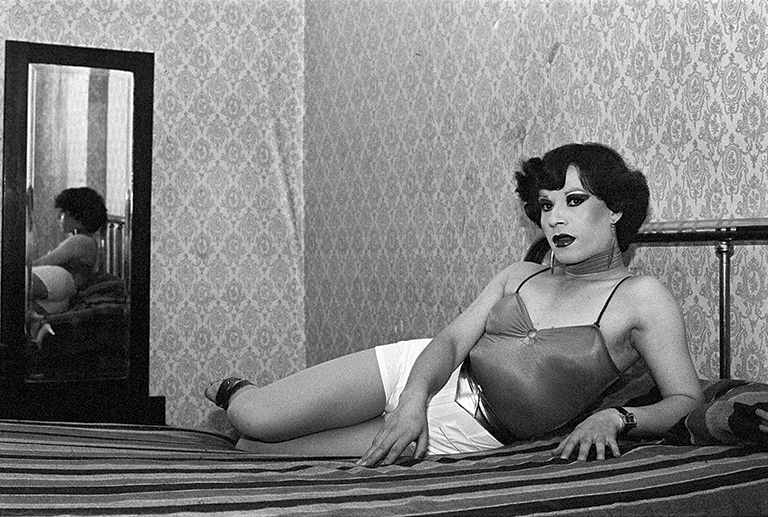
Paz Errázuriz
Evelyn I, Santiago, from the series Adam’s apple, 1987
© Paz Errázuriz. Colecciones Fundación MAPFRE
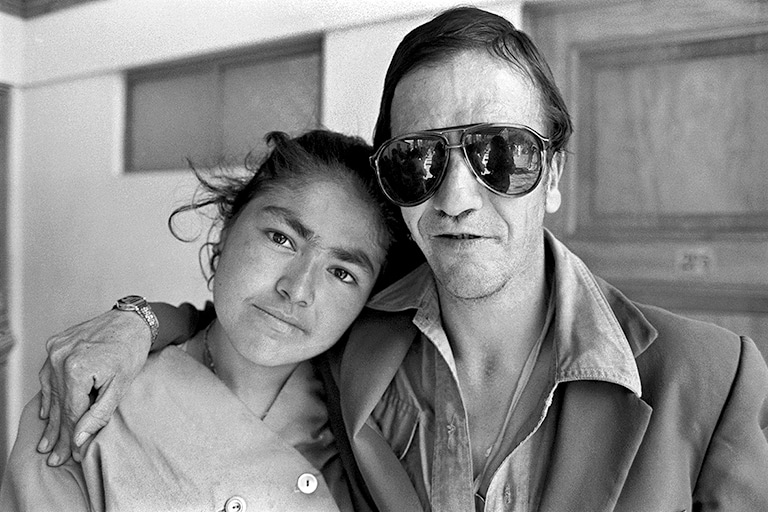
Heart attack 5, Putaendo, from the series Heart attack of the soul, 1994
© Paz Errázuriz. Colecciones Fundación MAPFRE
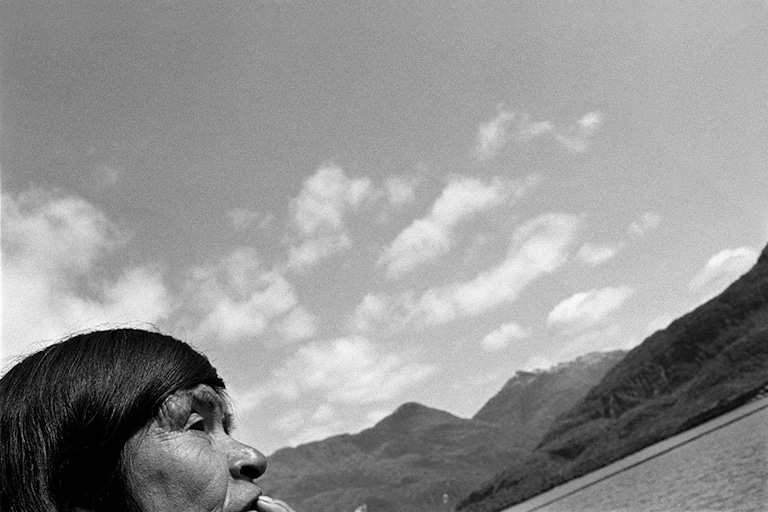
Paz Errázuriz
Atáp, Ester Edén Wellington, Puerto Edén, from the series The nomads of the sea, 1995
© Paz Errázuriz. Colecciones Fundación MAPFRE
Paz Errázuriz
